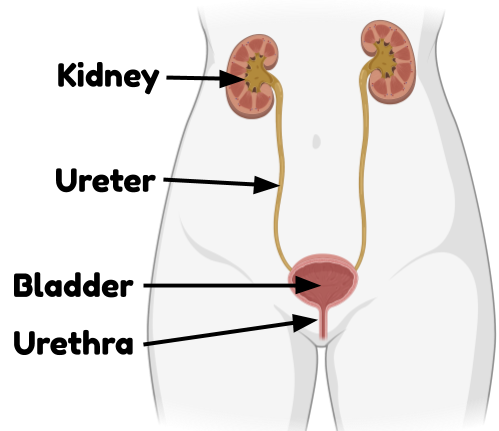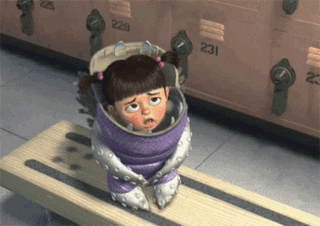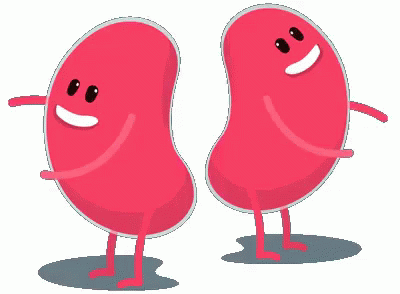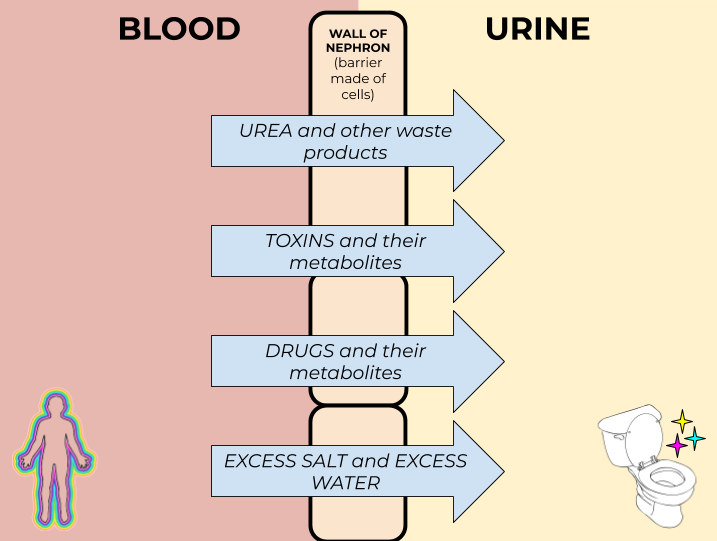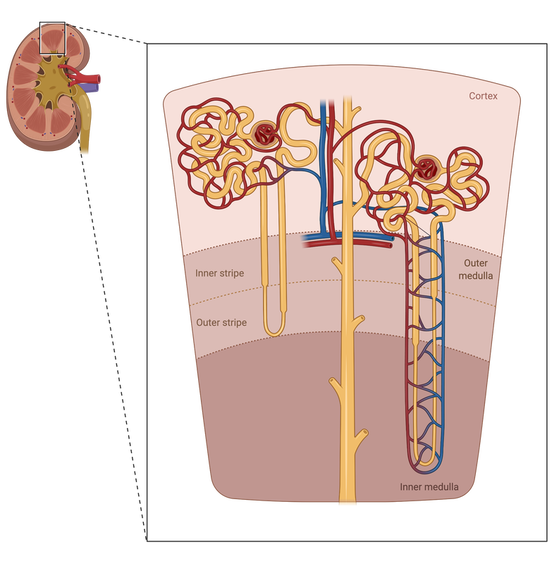the excretory system
taking out the trash
Have you ever had to take out the trash? Have you ever thought that it was so annoying when your parents asked you to empty out the trash from your bathroom or bedroom or when they told you to wheel the can to the sidewalk so the garbage truck could pick it up the next day?
It can get pretty annoying.
But, it’s also pretty necessary. You might not realize it, but trash piles up fast, and, when it piles up, it can cause all kinds of problems. If you don’t believe me, just imagine what kind of smelly, gross mess your house would become if you never took the garbage out. It would probably start to look like the house of poor old Sarah Cynthia Sylvia Stout:
It can get pretty annoying.
But, it’s also pretty necessary. You might not realize it, but trash piles up fast, and, when it piles up, it can cause all kinds of problems. If you don’t believe me, just imagine what kind of smelly, gross mess your house would become if you never took the garbage out. It would probably start to look like the house of poor old Sarah Cynthia Sylvia Stout:
Gross. Clearly, getting rid of trash is important. And, trash piles up in your body, too. Not banana peels and toilet paper rolls, of course, but our bodies make all sorts of waste products as a result of the chemical reactions going on inside of our bodies. Some of these waste products can be toxic to our cells, which makes them super important to get rid of before they become a problem. Other waste products aren’t necessarily toxic, but we still don’t want them hanging around. In addition to waste products that are made by our bodies, our bodies can collect molecular “trash,” including harmful toxins and excess salts, minerals, and nutrients, from the environment. Getting rid of all of these different types of trash is job of the excretory system.
the structure of the excretory system
The excretory system is a group of organs that includes your kidneys, your bladder, tubes to connect your kidneys to your bladder (these are called ureters), and a tube to connect your bladder to the outside world (this is called your urethra). It all connects like so:
The kidney is the part of the excretory system that does the main function of actually filtering blood. The other parts of your excretory system—your ureters, your bladder, and your urethra—are collectively called your urinary tract. They are responsible for getting the urine make by your kidneys out of your body. The ureters and urethra are both just waterproof tubes that keep urine going where it needs to go. The bladder holds urine so that you can get rid of a lot of it at once instead of just trickling out tiny amounts of pee all of the time. It is essentially a muscular sac that can hold urine on the inside and then use those muscles to squeeze it out (a unique structure for a unique function). This is obviously a really important function, but it’s important to understand that the bladder doesn’t actually make pee or filter your blood in any way. It just holds pee until you can get rid of it in a socially appropriate context. (Flush, flush!)
the kidneys
The kidneys are the main organ of the excretory system. Every human being has two kidneys, a right and a left one, because they’re just that important. (So, pretty much the same reason that we have two lungs, two arms, and two legs. Don’t ask me why we don’t have two hearts. It seems pretty weird that we don’t have a back-up of one of our most important organs.)
|
The kidneys are the part of the excretory system that is responsible for actually filtering out your blood and deciding what gets to stay and what has to go. The good stuff that we need stays in the body, and the bad stuff that we don’t need—or, worse, might actually hurt us—goes into our pee.
To get a little more specific, the kidneys get rid of:
|
- Other waste products.
- Toxins (potentially harmful substances) from the environment, and their metabolites. Metabolites are the molecules that result from the breakdown of toxins in the liver.
- Drugs/medications and their metabolites.
- Excess salts and excess water. We want some salt and kind of a lot of water in our bodies, but too much can still be toxic. (Remember, if our blood has too much water—the concentration is too low—water will move into our cells by osmosis and cause them to burst). This important function of the kidney is part of a vital physiological process called osmoregulation, or balancing the amount of water in your body. Osmoregulation involves many organ systems and a lot of communication between them (via hormones, chemical signals that we will talk about later). Light-colored urine means that you have plenty of water.
These things are all trash, and trash goes in our pee.
The kidneys also play a significant role in producing vitamin D and certain hormones. They’re also very important in blood pressure regulation. This video provides a good overview of the many functions of the kidneys:
the nephron: the functional unit of the kidney
Because the kidney has a specialized function, it has a specialized structure. Most of what is special about the kidney is in it’s microscopic structure, which is made up of about a million tiny, super-specialized, twisty tubes called nephrons. If you’re curious, they look like this:
|
The nephron consists of the glomerulus, which is the main filtering component. It is a capillary with lots of small pores to push all small solutes out of the blood. This includes wastes, but also includes good things like nutrients and ions. The tubules then use membrane transport to selectively move nutrients and ions back into the blood. It also does active transport to pump any residual wastes out of the blood. Each nephron is one long tube that ultimately connects to the other tubes of the urinary tract (the ureter), and each tube is only one cell thick. They are wrapped in an intricate network of capillaries, so that exchange between urine and blood can occur. |
All of the twists and turns and curves of the nephron serve an important purpose, mostly to do with increasing surface area for membrane transport to occur. This is the same membrane transport that gets anything into or out of any other cell, and it relies on the same mechanisms of passive diffusion, facilitated diffusion (including osmosis across aquaporins), and active transport. There’s also some bulk flow going on, especially at the glomerulus. This comes back to the idea that everything in your body is happening because of a cell, and everything in your cells is happening because of biochemistry.
kidney disease and dialysis
Sometimes, people have damaged kidneys. Damaged kidneys get rid of a lot of the stuff that we want and aren’t as good at getting rid of the stuff that we don’t want. Lots of things can cause kidney damage, including uncontrolled diabetes, high blood pressure, genetics, autoimmune diseases (diseases in which your immune system, which we’ll talk about later, attacks your own cells when it shouldn’t), certain medications (including excess amounts of certain over-the-counter medications, like ibuprofen), and certain infections. Kidney disease is very common, affecting about 14% of the population (that’s 1 in 7 people).
When kidney disease gets really bad (that is, when you have less than 20% kidney function left), people need to go on dialysis. Dialysis is a process in which people are hooked up to a machine (via really big needles) that acts like a kidney, filtering the blood. It’s not nearly as good at doing this as an actual kidney is, and it is a very time-consuming process that really affects people's lives. Most people on dialysis are waiting for a kidney transplant, a chance that could change their lives.
When kidney disease gets really bad (that is, when you have less than 20% kidney function left), people need to go on dialysis. Dialysis is a process in which people are hooked up to a machine (via really big needles) that acts like a kidney, filtering the blood. It’s not nearly as good at doing this as an actual kidney is, and it is a very time-consuming process that really affects people's lives. Most people on dialysis are waiting for a kidney transplant, a chance that could change their lives.
other excretory organs
Some people consider other organs, like the lungs and the skin, to be part of the excretory system, because they are also responsible for getting rid of waste. For example, your lungs expel carbon dioxide, which is a waste product of cell respiration. Your skin can get rid of excess salt and water in the form of sweat. The skin can also be helpful in getting rid of certain types of toxins. It’s good to understand that many different organs and organ systems have overlapping functions and that different parts of your body work together to perform really important tasks. It’s also good to understand these specific excretory functions of the lungs and skin. But, for our purposes, when we talk about the excretory system, we mean the kidneys and urinary tract.
Summary
In summary, kidneys are awesome, trash is bad, structure begets function, everything that happens in the body is because of a cell, and everything that happens in a cell is because of biochemistry. Can I get a 🎵 K-I-D-N-E-Y, kidneys are so great!? 🎵 Whoo!
This video gives a little bit of a deeper dive:
This video gives a little bit of a deeper dive:
You should understand:
- That the excretory system is responsible for eliminating wastes from the body, as urine.
- That the excretory system consists of your kidneys, which are responsible for cleaning your blood (and some other functions related to maintaining blood homeostasis), as well as ureters, which connect the kidneys to the bladder; the bladder, which stores urine; and the urethra, which connects your bladder to the outside world.
- That the functional unit of the kidney is the nephron, which consists of the glomerulus, which filters all small solutes out of your blood (including nutrients and wastes), and the tubules, which selectively reabsorbs nutrients and actively gets rid of any wastes remaining in the blood.
- That dialysis is a life-saving treatment that filters the blood outside of the body using a special machine. It is required by people who have kidney disease, which is pretty common. Kidney disease is caused by other common diseases, including diabetes and high blood pressure.
- That some organs outside of the excretory system also have important excretory functions.
Learning Activity
Contributors: Meghan Kori, Emma Moulton
Some images made using biorender.com
Some images made using biorender.com
